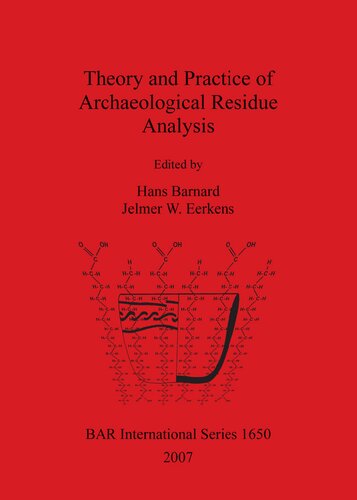

Most ebook files are in PDF format, so you can easily read them using various software such as Foxit Reader or directly on the Google Chrome browser.
Some ebook files are released by publishers in other formats such as .awz, .mobi, .epub, .fb2, etc. You may need to install specific software to read these formats on mobile/PC, such as Calibre.
Please read the tutorial at this link: https://ebookbell.com/faq
We offer FREE conversion to the popular formats you request; however, this may take some time. Therefore, right after payment, please email us, and we will try to provide the service as quickly as possible.
For some exceptional file formats or broken links (if any), please refrain from opening any disputes. Instead, email us first, and we will try to assist within a maximum of 6 hours.
EbookBell Team

4.8
64 reviewsOrganic residues include a broad range of materials that can be analyzed at a macro-, micro- or molecular level. They represent the carbon-based remains (in combination with H, N, O, P and S) of fungi, plants, animals and humans. Organic residue analysis is a relatively new technique to archaeology. The chapters of this volume bring together scholars from across the globe and attest to the diverse range of analytical methods, material types, spatio-temporal cultural units and research questions to which organic residue analysis has been applied. They are partly the proceedings of a symposium on this subject, held on 31 March 2005 in Salt Lake City (Utah) during the 70th Annual Meeting of the Society for American Archaeology, and partly the result of invitations to contribute forwarded to many active in this field.